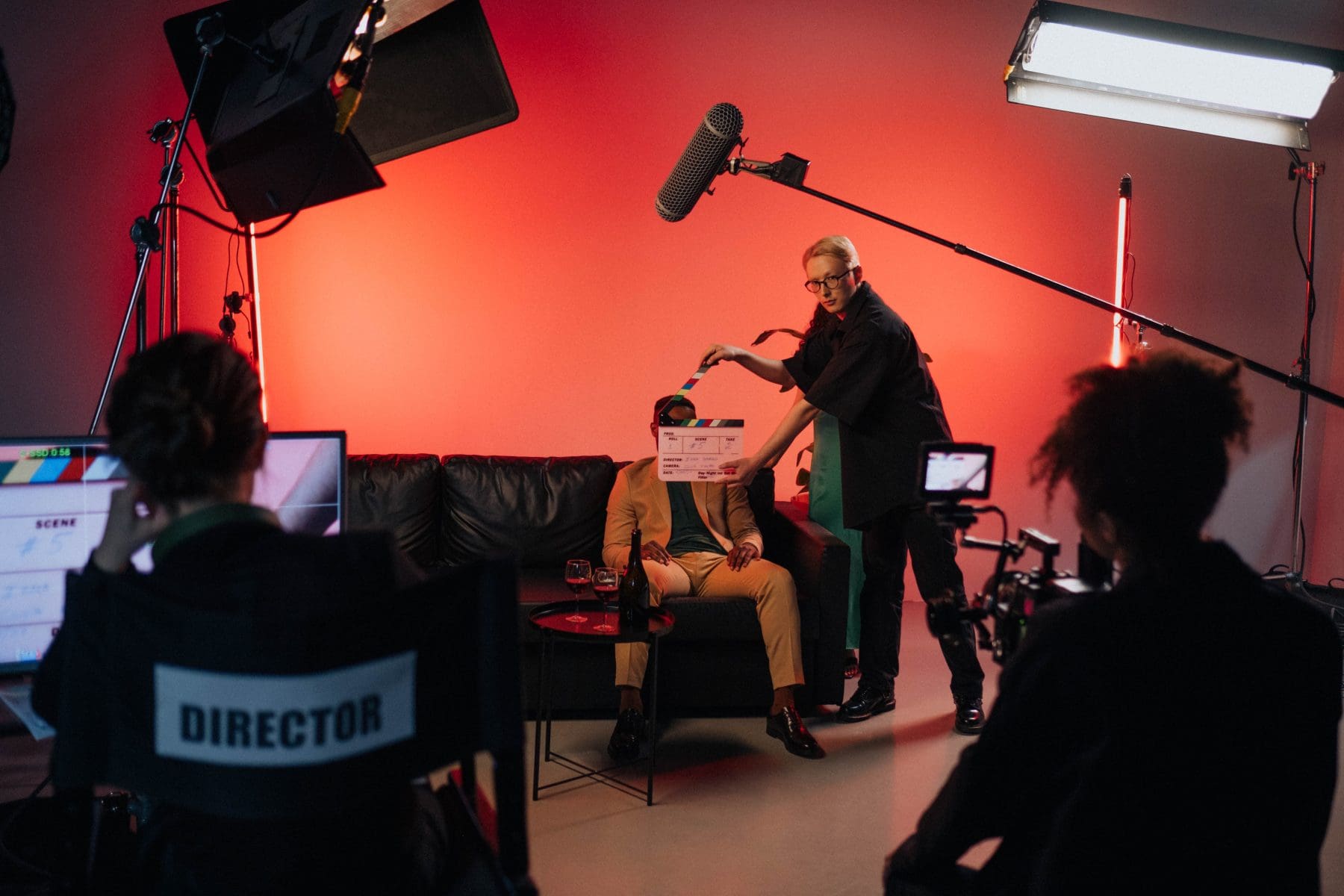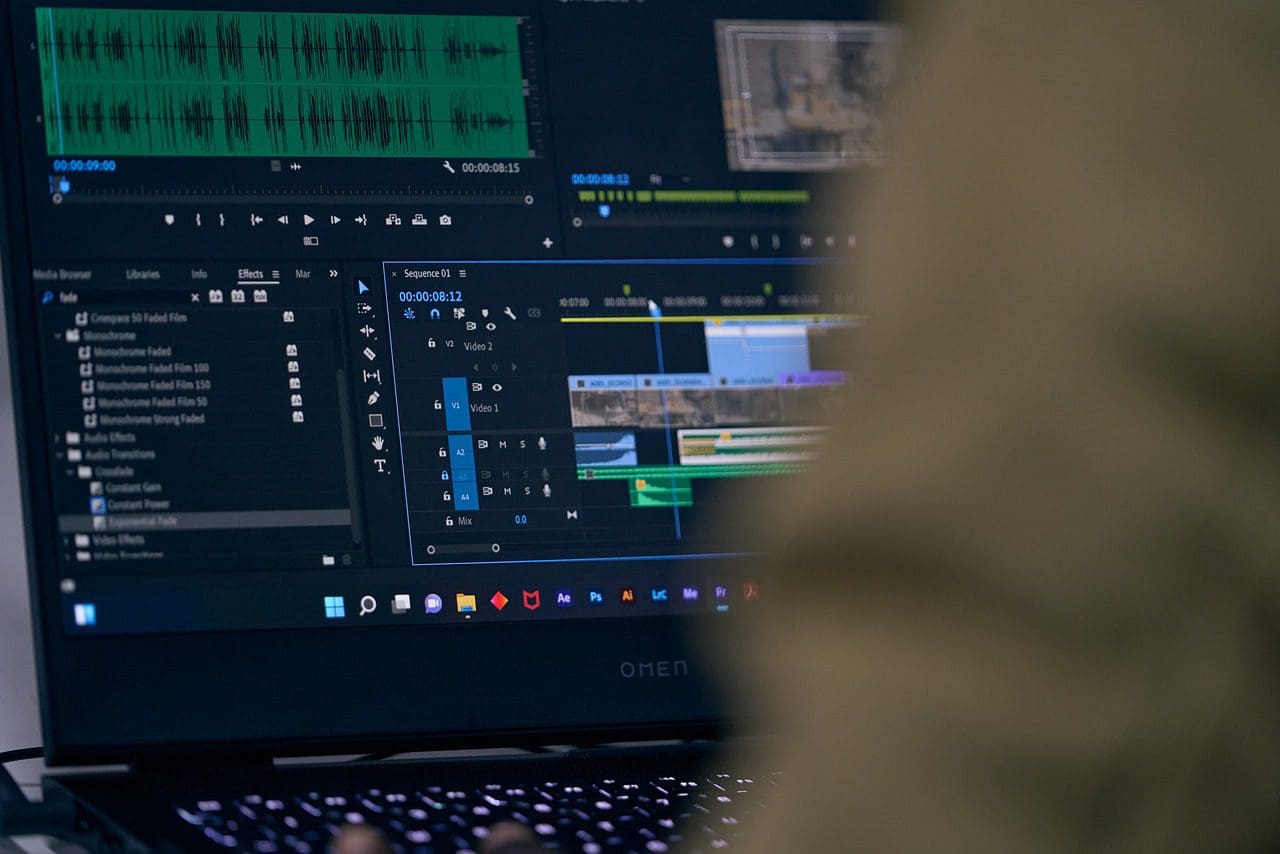Creating a corporate video can be a powerful way to promote your brand, showcase your products or services, and communicate with your target audience. Whether you’re looking to create a short promotional video or a longer, more in-depth corporate video, it’s important to follow a few key steps to ensure success. In this corporate video guide, we’ll walk you through the process of creating a professional and effective corporate video, from start to finish.
Step 1: Define your goals and target audience.
Before you begin the video production process, it’s important to have a clear understanding of what you want to achieve with your corporate video. Are you looking to generate leads, increase brand awareness, or communicate a specific message to your audience? Understanding your goals will help you to create a more effective video that resonates with your target audience.
Defining your goals and target audience is an essential step in the process of creating a corporate video. Without a clear understanding of what you want to achieve and who you are trying to reach, it will be difficult to create a video that resonates with your audience and helps you to achieve your business goals.
One of the first things you should do when defining your goals and target audience is to consider the purpose of your video. Are you looking to generate leads, increase brand awareness, or communicate a specific message to your audience? Understanding the purpose of your video will help you to determine the best way to reach your target audience and what kind of content to include in your video.
It’s also important to consider the specific goals you want to achieve with your video. Do you want to increase website traffic, drive sales, or improve customer loyalty? By setting specific goals, you can measure the success of your video and make adjustments as needed.
In addition to defining your goals, it’s also important to consider your target audience. Who are you trying to reach with your video? Understanding the demographics, interests, and needs of your target audience will help you to create a video that resonates with them and encourages them to take action.
One way to get a better understanding of your target audience is to create buyer personas. Buyer personas are fictional characters that represent your ideal customer, based on data and research about your target audience. By creating buyer personas, you can better understand the needs and motivations of your target audience and create a video that speaks directly to them.
Defining your goals and target audience is an important first step in the process of creating a corporate video. By understanding what you want to achieve and who you are trying to reach, you can create a video that resonates with your audience and helps you to achieve your business goals.
Step 2: Determine your budget and resources.

Corporate video production can be expensive, so it’s important to have a clear understanding of your budget and resources before you begin. This will help you to determine what kind of video you can afford to produce and how you should allocate your resources.
Determining your budget and resources is an essential step in the process of creating a corporate video. Without a clear understanding of your financial limitations and the resources at your disposal, it will be difficult to create a video that meets your needs and achieves your desired outcomes.
One of the first things you should do when determining your budget and resources is to set a budget for your video. This will help you to understand the financial limitations you are working with and make informed decisions about what you can afford. When setting your budget, be sure to consider the cost of production, post-production, and promotion.
In addition to setting a budget, it’s also important to consider the resources you have available. This includes any internal resources, such as staff or equipment, as well as external resources, such as freelancers or vendors. By understanding the resources you have at your disposal, you can make informed decisions about how to allocate them and ensure that you have the support you need to create a successful video.
Another important factor to consider when determining your budget and resources is the scope of your video. Do you want to create a short promotional video or a longer, more in-depth corporate video? The scope of your video will have a significant impact on the budget and resources required to produce it.
Overall, determining your budget and resources is an essential step in the process of creating a corporate video. By understanding your financial limitations and the resources at your disposal, you can create a video that meets your needs and achieves your desired outcomes.
Here is a table outlining the approximate cost and type of video:
| Type of Video | Approximate Cost |
|---|---|
| Short promotional video (1-3 minutes) | $1,000-$5,000 |
| Corporate video (5-10 minutes) | $3,000-$10,000 |
| Branded content video (10-20 minutes) | $8,000-$25,000 |
| Documentary (20+ minutes) | $25,000+ |
Please note that these estimates are approximate and may vary based on a variety of factors, including the complexity of the project, the level of production value desired, and the location of the shoot. It’s always a good idea to get detailed quotes from multiple vendors to get a better understanding of the costs involved in creating a corporate video.
Step 3: Develop a creative brief.

A creative brief is a document that outlines the key points of your video, including your target audience, message, and desired outcomes. This will help to ensure that everyone involved in the production process is on the same page and working towards the same goals.
Developing a creative brief is an important step in the process of creating a corporate video. A creative brief is a document that outlines the key points of your video, including your target audience, message, and desired outcomes. By developing a creative brief, you can ensure that everyone involved in the production process is on the same page and working towards the same goals.
The first thing you should do when developing a creative brief is to define your target audience. Who are you trying to reach with your video? Understanding the demographics, interests, and needs of your target audience will help you to create a video that resonates with them and encourages them to take action.
Next, you should define the message you want to communicate with your video. What do you want to say to your audience? Whether you’re looking to promote a product, raise awareness about a cause, or simply share information, it’s important to have a clear and concise message that resonates with your audience.
Once you have defined your target audience and message, you should consider the desired outcomes of your video. What do you want your audience to do after watching your video? Do you want them to visit your website, make a purchase, or share your video with their network? By defining your desired outcomes, you can create a video that is more effective at achieving your goals.
In addition to these key points, you should also consider any other details that will be relevant to the production process. This may include the tone and style of your video, the length of your video, and any specific requirements for graphics or special effects.
Overall, developing a creative brief is an important step in the process of creating a corporate video. By outlining the key points of your video, you can ensure that everyone involved in the production process is on the same page and working towards the same goals.
Step 4: Choose a production team.

Once you have a clear understanding of your goals and resources, it’s time to choose a production team. This should include a director, producers, and any other key team members. Make sure to choose a team that has experience in creating corporate videos and a track record of producing high-quality work.
Choosing a production team is an important step in the process of creating a corporate video. Your production team will be responsible for bringing your vision to life, so it’s important to choose a team that has the skills and experience to deliver high-quality work.
When choosing a production team, you should consider the specific needs of your project. Do you need a team with experience in a particular industry or expertise in a specific type of video? Look for a team that has a track record of producing work that meets your needs and aligns with your goals.
It’s also important to consider the personalities of the team members. You will be working closely with your production team, so it’s important to choose individuals who are easy to work with and willing to collaborate to achieve your desired outcomes.
Another factor to consider when choosing a production team is their availability. Make sure to choose a team that can accommodate your schedule and deadlines.
In addition to the production team, you should also consider hiring any additional support staff or freelancers you may need, such as casting directors, scriptwriters, or animators.
Overall, choosing a production team is an important step in the process of creating a corporate video. By choosing a team with the skills and experience to deliver high-quality work, you can ensure that your video is professional and effective.
Step 5: Plan your shoot.

The next step in the process is to plan your shoot. This will involve determining the location, setting up any necessary equipment, and rehearsing any scripted elements. It’s important to have a clear plan in place to ensure that the shoot goes smoothly and efficiently.
Planning your shoot is an important step in the process of creating a corporate video. A well-planned shoot will ensure that your video is captured efficiently and effectively, saving time and resources in the long run.
The first thing you should do when planning your shoot is to determine the location. Where will you be filming your video? Consider factors such as accessibility, lighting, and ambiance when choosing a location.
Next, you should set up any necessary equipment. This may include cameras, lighting, and sound equipment. Make sure to test all of your equipment before the shoot to ensure that everything is in working order.
You should also rehearse any scripted elements of your shoot. This will help to ensure that your video is well-paced and flows smoothly.
It’s also a good idea to create a shot list, outlining the specific shots you want to capture during the shoot. This will help to ensure that you get all of the footage you need and make the most of your time on set.
Overall, planning your shoot is an important step in the process of creating a corporate video. By taking the time to determine the location, set up your equipment, and rehearse your scripted elements, you can ensure that your shoot goes smoothly and efficiently.
Step 6: Capture your footage.

Once your shoot is planned and rehearsed, it’s time to start capturing your footage. Make sure to pay attention to lighting, sound, and framing to ensure that you get the best possible footage.
Capturing your footage is an important step in the process of creating a corporate video. To ensure that you get the best possible footage, it’s important to pay attention to lighting, sound, and framing.
Lighting is an important factor to consider when capturing your footage. Proper lighting can help to set the mood of your video and ensure that your subjects are well-lit and easy to see. When setting up your lighting, be sure to consider the time of day, the direction of the light, and any shadows that may be present.
Sound is another important factor to consider when capturing your footage. Poor sound quality can ruin an otherwise great video, so it’s important to make sure that your audio is clear and easy to understand. Make sure to test your microphones and recorders before the shoot to ensure that they are working properly.
Framing is another important aspect of capturing your footage. How you frame your shots can have a big impact on the final product. Make sure to consider the composition of your shots, including the placement of your subjects within the frame and the use of negative space.
Overall, capturing your footage is an important step in the process of creating a corporate video. By paying attention to lighting, sound, and framing, you can ensure that you get the best possible footage and create a professional and effective video.
Here is a combined chart of video capture techniques and their associated results:
| Technique | Result | Effect |
|---|---|---|
| Wide shot | Shows the entire setting | Establishes location and can create a sense of grandeur or scope |
| Medium shot | Shows the subject from the waist up | Good for interviews and conversations, creates a sense of intimacy |
| Close-up shot | Shows a detailed view of the subject’s face or a small object | Highlights details and emotions, can create a sense of drama |
| Extreme close-up shot | Shows a very detailed view of a small object or specific part of the subject | Shows extreme detail and can create a sense of mystery or tension |
| Panning shot | A camera movement that follows a subject horizontally | Follows a subject horizontally, can create a sense of movement or transition |
| Tilting shot | A camera movement that follows a subject vertically | Follows a subject vertically, can create a sense of movement or reveal |
| Tracking shot | A camera movement that follows a subject horizontally, vertically, or both | Follows a subject horizontally, vertically, or both, can create a sense of immersion or pursuit |
| Dolly shot | A camera movement that follows a subject on a track or dolly | Follows a subject on a track or dolly, can create a sense of movement or reveal |
| Handheld shot | A camera movement that is shot by hand | Shot by hand, creates a sense of intimacy or instability |
By using different video capture techniques, you can create a video that engages your audience and elicits a desired emotional response. Experiment with different techniques to find the ones that work best for your project.
Step 7: Edit and post-produce your video.
After you’ve captured your footage, it’s time to edit and post-produce your video. Our corporate video guide explains how this will involve cutting and splicing together the best takes, adding any necessary graphics or special effects, and adding a soundtrack.
The post-production process is the process of editing and refining your footage to create a finished product. This process typically involves several steps, including:
- Assembling the raw footage: This involves organizing and sorting through your raw footage to identify the shots you want to include in your final video.
- Editing the video: This involves trimming and rearranging the shots to create a cohesive and compelling story. You may also add transitions, graphics, and other elements to enhance the video.
- Adding sound effects and music: This involves selecting and adding sound effects and music to enhance the mood and atmosphere of your video.
- Color grading: This involves adjusting the color and contrast of your video to create a desired look and feel.
- Adding titles and credits: This involves adding any necessary titles, such as the name of your company or the names of your cast and crew.
- Exporting the final video: This involves saving and exporting your video in the appropriate format for distribution.

Overall, the post-production process involves a wide range of tasks and can be a time-consuming process. However, by investing the time and effort into post-production, you can create a professional and polished video that effectively communicates your message to your audience.
There are a variety of software options available for post-production, including both free and paid options.
One popular software option for post-production is Adobe Premiere Pro. This is a professional-grade video editing software that is widely used in the film and television industry. It offers a wide range of features, including support for 4K resolution, audio and video effects, and advanced color grading.
Another popular software option is Final Cut Pro. This is a video editing software specifically designed for Mac users. It offers a wide range of features, including support for 4K resolution, advanced audio editing, and integration with other Apple products.
A free software option for post-production is Lightworks. This software offers many of the same features as paid options, including support for 4K resolution, a wide range of effects, and advanced audio editing.
Overall, there are a variety of software options available for post-production, including both free and paid options. Choose the software that best meets your needs and budget.
Step 8: Promote your video.
Once your corporate video is complete, it’s important to promote it to your target audience. Our corporate video guide explains how this can be done through a variety of channels, including social media, email marketing, and paid advertising.
- Sharing on social media: Share your video on social media platforms such as Facebook, Twitter, and LinkedIn to reach a wider audience. Be sure to include relevant hashtags and engage with your followers to increase the visibility of your video.
- Embedding on your website: Embed your video on your company website or blog to make it easily accessible to your audience. This can also help to increase your website’s search engine ranking.
- Sending to your email list: If you have an email list, consider sending a message promoting your video. This can be an effective way to reach a targeted audience and drive traffic to your video.
- Submitting to video sharing websites: Submit your video to video sharing websites such as YouTube or Vimeo to reach a wider audience. These websites can also help to increase your search engine ranking.
- Using paid advertising: Consider using paid advertising to promote your video. This can be an effective way to reach a targeted audience and drive traffic to your video. Options include social media advertising, display advertising, and video advertising on platforms such as YouTube.
Overall, promoting your corporate video is an important step in ensuring that it reaches your target audience and achieves your desired outcomes. By using a variety of tactics, you can increase the visibility of your video and drive traffic to it.

